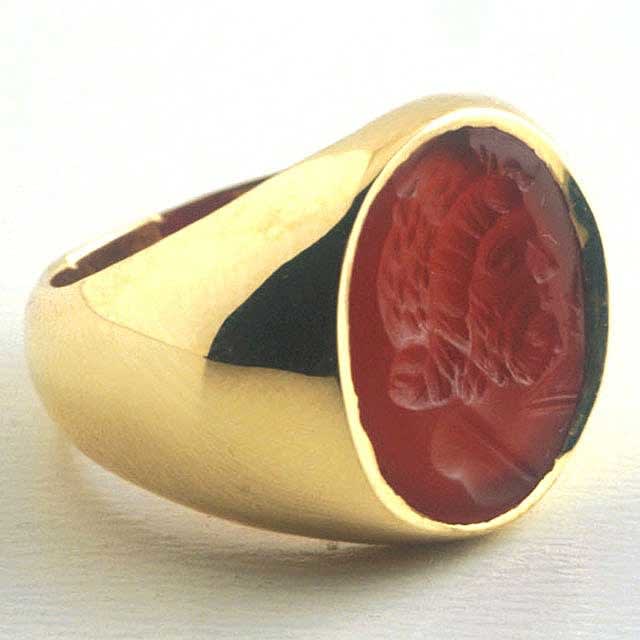Gold Ring with Carnelian Intaglio Bust of a Roman Deity, 1700 CE - 1800 CE
Carnelian/Gold
FJ.6281
The art of glyptics, or carving on colored precious stones, is probably one of the oldest known to humanity. Intaglios, gems with an incised design, were made as early as...
The art of glyptics, or carving on colored precious stones, is probably one of the oldest known to humanity. Intaglios, gems with an incised design, were made as early as the fourth and third millennia B.C. in Mesopotamia and the Aegean Islands. The exhibit a virtuosity of execution that suggests an old and stable tradition rooted in the earliest centuries. The tools required for carving gems were simple: a wheel with a belt-drive and a set of drills. Abrasives were necessary since the minerals used were too hard for a metal edge. A special difficulty of engraving intaglios, aside from their miniature size, was that the master had to work with a mirror-image in mind.
The Classical Revival was a phenomenon that swept through Europe in the 18th and 19th Centuries. A new appreciation for antiquity and ancient art forms was fostered by discoveries in the nascent scientific field of archaeology. Perhaps the Classical Revival also reveals a latent longing towards the Arcadian lifestyles of yesterday abandoned as Europe became rapidly industrialized and increasingly urbanized. On this stunning intaglio, the bearded bust of a Roman deity has been depicted. With flowing hair and thick beard, the facial features of this god clearly imitate those of mighty Jupiter himself; however, with no key attributes to secure the identity, the true name of this god remains elusive and open to debate. Regardless of the specific identifications of the figure, it is clear that this seal represents a god, capturing his divine image in a precious gemstone.
The Classical Revival was a phenomenon that swept through Europe in the 18th and 19th Centuries. A new appreciation for antiquity and ancient art forms was fostered by discoveries in the nascent scientific field of archaeology. Perhaps the Classical Revival also reveals a latent longing towards the Arcadian lifestyles of yesterday abandoned as Europe became rapidly industrialized and increasingly urbanized. On this stunning intaglio, the bearded bust of a Roman deity has been depicted. With flowing hair and thick beard, the facial features of this god clearly imitate those of mighty Jupiter himself; however, with no key attributes to secure the identity, the true name of this god remains elusive and open to debate. Regardless of the specific identifications of the figure, it is clear that this seal represents a god, capturing his divine image in a precious gemstone.



